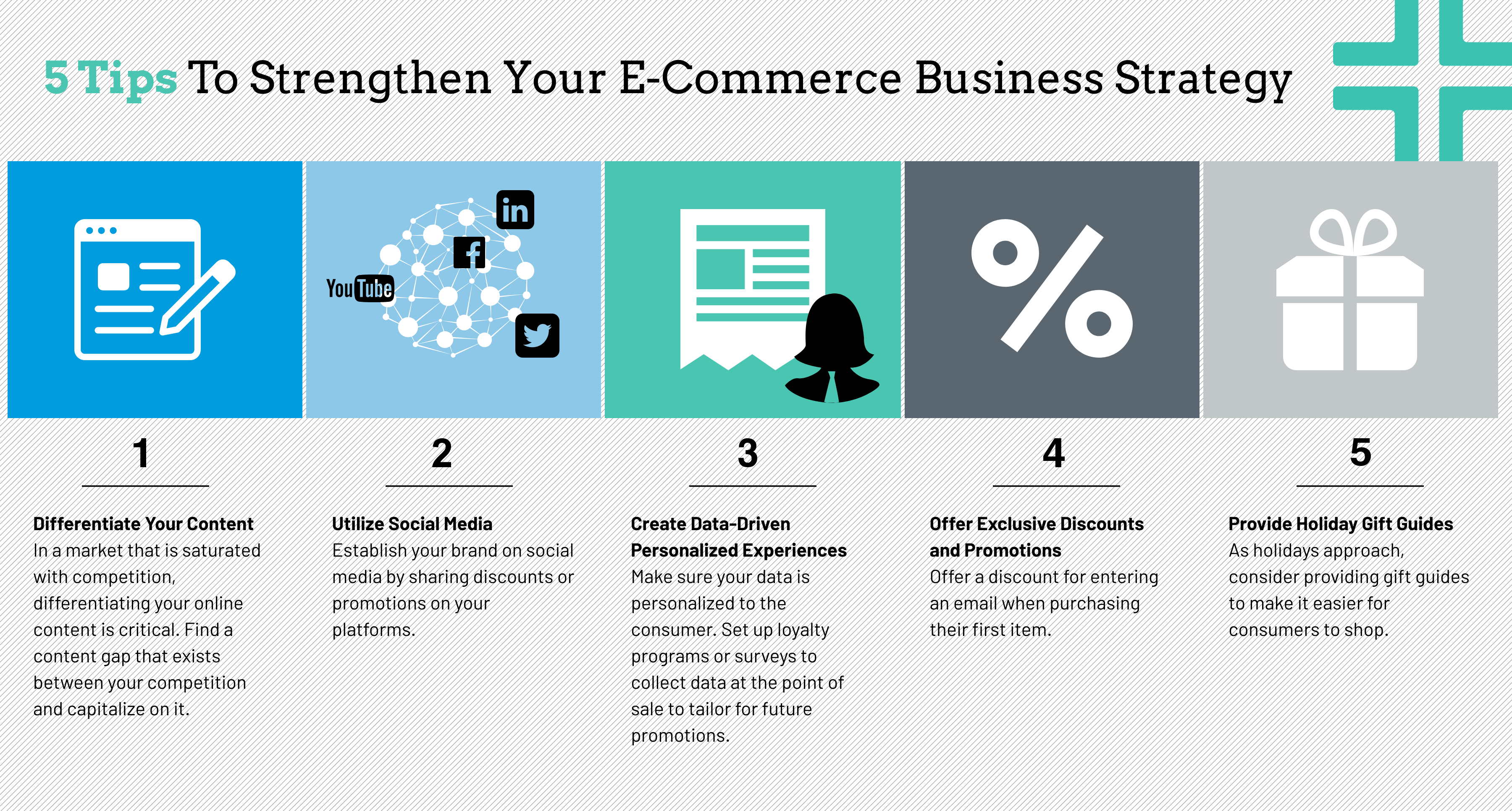The COVID-19 pandemic has impacted jobs, remote learning, increased cooking and fitness at home, and significantly increased e-commerce among all industries. The pandemic continues to change how businesses approach their strategic moves to stay ahead of their competition.
According to experts, e-commerce is forecasted to grow by nearly $11 trillion from now until 2025.
The E-Commerce Consumer Experience
Giant online retailers like Amazon are taking full advantage of this uptick in e-commerce spending. Since non-essential stores closed during the pandemic, more and more consumers went online to shop, with the convenience of receiving their orders without leaving their homes. Even with essential items like groceries and household items, apps like Instacart allowed consumers to shop at their local grocery stores (i.e., ShopRite, Stop and Shop, and Acme) without having to leave their homes. Instacart gives consumers peace of mind by eliminating the need to go to the grocery store and limiting the risk of potentially contracting the virus. This app also allows the consumer to shop virtually with an Instacart worker using a chat function, permitting them to make any substitutions or last-minute additions to their order. Consumers are becoming more comfortable with new online experiences, thus the trend will likely continue to grow.
E-Commerce Technology Trends Here to Stay
Companies are turning to social media platforms like Facebook and Tik Tok for advertising. Companies are sponsoring celebrities and other social media influencers to promote their products to a different audience internationally. The celebrities and influencers are going live on various platforms directing consumers to the product’s website and increasing revenue for the company.
Another new technology trend impacting the e-commerce industry is the use of buy now, pay later and buy online, pick up in-store. This technology makes the buying process easier for consumers. The buy now, pay later option allows consumers to make monthly installments without the use of a credit card and, most of the time, is interest-free. The buy online, pick up in-store option is when consumers buy and reserve the product online, then pick it up at the location when convenient. This option avoids delivery fees and allows the consumer to visit the store in-person.
E-Commerce: Temporary or Permanent?
According to a recent population study, Millennials and Generation Z make up approximately 50% of the United States population. The growth of these generations will contribute to the development of e-commerce as these generations have grown up in the digital world. We will continue to see an upward trend of e-commerce consumption across the globe and, more specifically, throughout the United States because of the concentration of these younger and more digitally driven populations.
E-Commerce Strategies for Retailers
As many brick-and-mortar retailers have reopened, total occupancy is limited. Many shoppers were anxious to return to their favorite store upon reopening, while others preferred online shopping. This dramatic shift in preference has caused retailers to enhance their e-commerce strategies.
Below are 5 tips to strengthen the e-commerce business strategy of your company given the consumer preference shift over the past year:
As the storm is weathered from the pandemic, consumer preferences can change quickly. Refocusing your strategy during challenging times can be overwhelming but can be accomplished by staying on top of trends and working closely with your advisors.
Author: Jordan Ghaffari, CPA | [email protected]
Contact Us
For more information on this topic, please contact a member of Withum’s E-Commerce Services Team.




